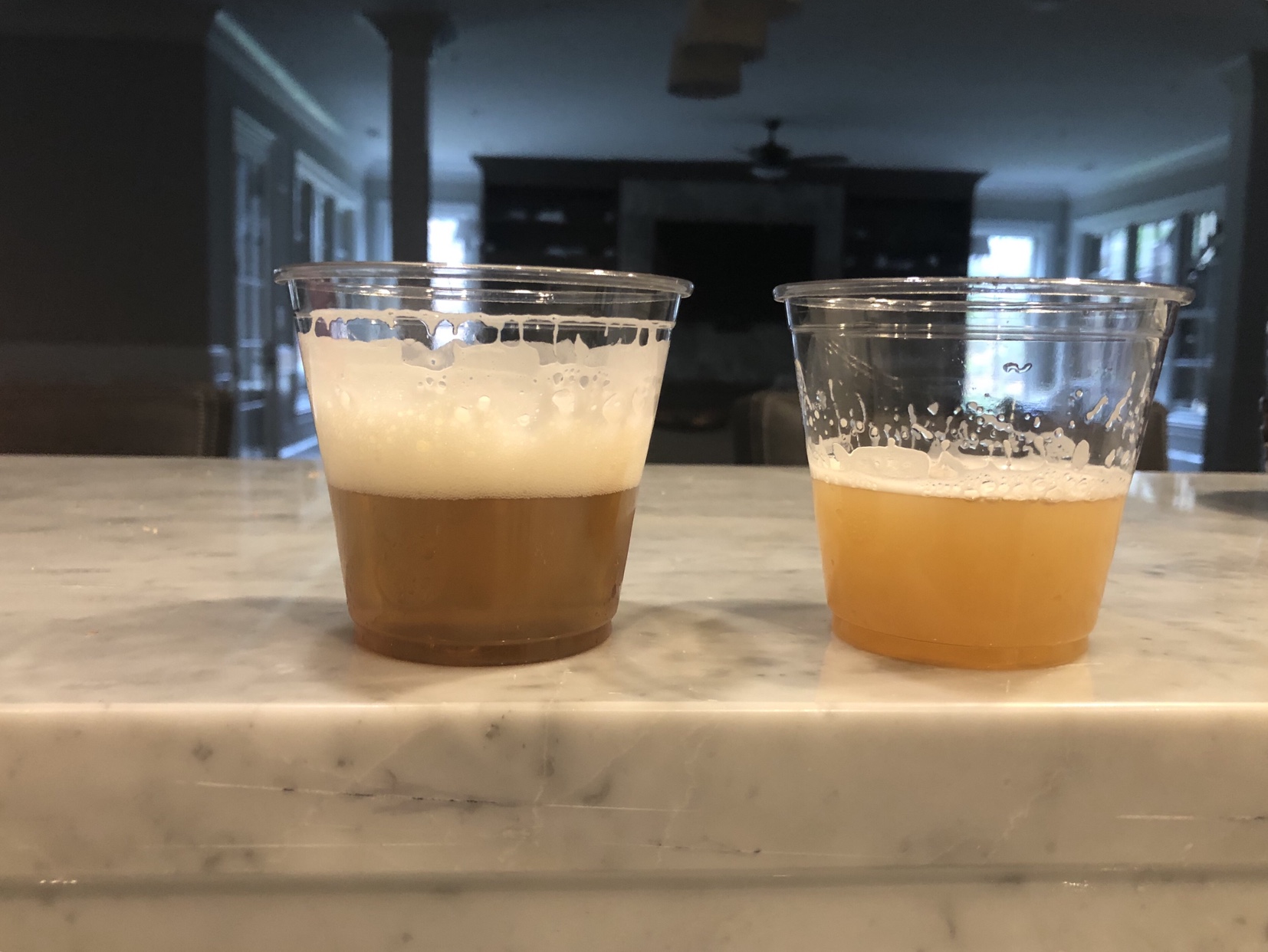North Raleigh Brewer
New Member
- Joined
- Feb 16, 2019
- Messages
- 2
- Reaction score
- 1
OK after about 8 years of brewing I decided to try transferring my beer to my kegs closed. I didn’t think it would make much of a difference but I figured I’d give it a try. My usual (and now old) technique is to attach a beer transfer tube to my speidel spigots and just open the spigot until my kegs are filled. I just bought a speidel gas post adapter (very cool product) that connects to the tops of the speidels where the air locks go. I connected a liquid in ball lock disconnect to my transferring tube and hooked it up the the liquid in posts. Then I used about a few psi’s to push the beer into the kegs closed after purging them. Pretty standard technique I think.
I brewed 4 kegs (in a 30 gallon kettle) with identical recipes except I used different hops for dry hopping during fermentation in the speidels and then again for my keg dry hopping. At the last moment when transferring I decided to transfer two kegs open (my old way described above) and two closed (also described above). I decided to do this to compare the open versus closed technique even though with the different hops in all 4 kegs it wouldn’t really qualify as any type of experiment but rather just an observation. Here’s what they look like after about two weeks in my kegerators. One picture is from my upstairs kegerator and the other is from my basement kegerator. In both pics the open transfer beer is on the left and closed is on the right. It appears I had more of an oxidation issue than I thought based on appearance. They all taste great though. Has anyone else that has transferred open and closed observed this much variation?


I brewed 4 kegs (in a 30 gallon kettle) with identical recipes except I used different hops for dry hopping during fermentation in the speidels and then again for my keg dry hopping. At the last moment when transferring I decided to transfer two kegs open (my old way described above) and two closed (also described above). I decided to do this to compare the open versus closed technique even though with the different hops in all 4 kegs it wouldn’t really qualify as any type of experiment but rather just an observation. Here’s what they look like after about two weeks in my kegerators. One picture is from my upstairs kegerator and the other is from my basement kegerator. In both pics the open transfer beer is on the left and closed is on the right. It appears I had more of an oxidation issue than I thought based on appearance. They all taste great though. Has anyone else that has transferred open and closed observed this much variation?

























































![Craft A Brew - Safale S-04 Dry Yeast - Fermentis - English Ale Dry Yeast - For English and American Ales and Hard Apple Ciders - Ingredients for Home Brewing - Beer Making Supplies - [1 Pack]](https://m.media-amazon.com/images/I/41fVGNh6JfL._SL500_.jpg)


